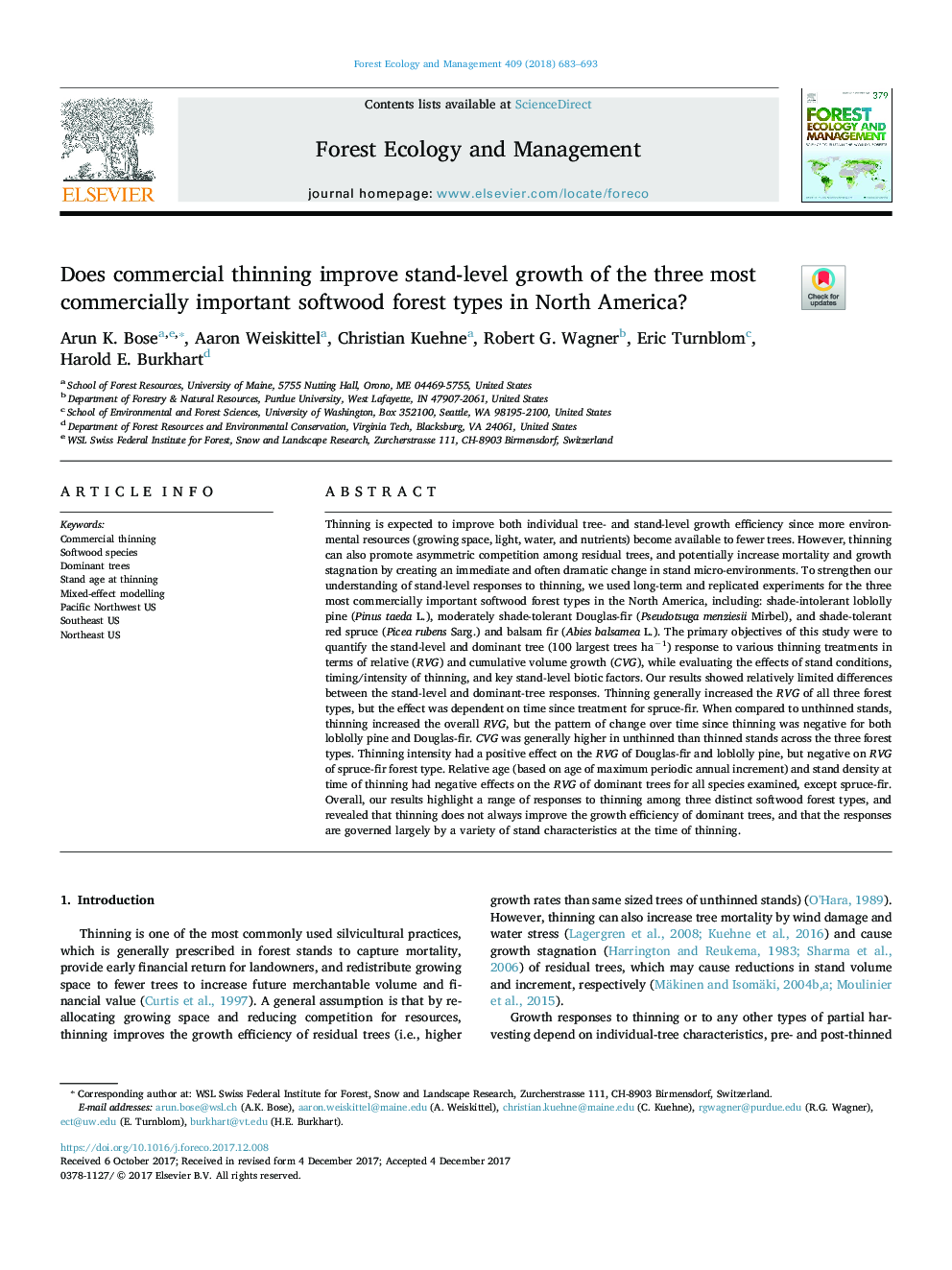| کد مقاله | کد نشریه | سال انتشار | مقاله انگلیسی | نسخه تمام متن |
|---|---|---|---|---|
| 6541962 | 1421349 | 2018 | 11 صفحه PDF | دانلود رایگان |
عنوان انگلیسی مقاله ISI
Does commercial thinning improve stand-level growth of the three most commercially important softwood forest types in North America?
ترجمه فارسی عنوان
آیا نازک سازی تجاری باعث افزایش رشد پایدار در سه نوع مهم ترین چوب جنگلی نرم در شمال امریکا می شود؟
دانلود مقاله + سفارش ترجمه
دانلود مقاله ISI انگلیسی
رایگان برای ایرانیان
کلمات کلیدی
ریزش تجاری، گونه های چوب نرم درختان غالب، سن در حال نازک شدن، مدل سازی مخلوط، اقیانوس آرام شمال غربی ایالات متحده، جنوب شرقی ایالات متحده، شمال شرقی ایالات متحده،
موضوعات مرتبط
علوم زیستی و بیوفناوری
علوم کشاورزی و بیولوژیک
بوم شناسی، تکامل، رفتار و سامانه شناسی
چکیده انگلیسی
Thinning is expected to improve both individual tree- and stand-level growth efficiency since more environmental resources (growing space, light, water, and nutrients) become available to fewer trees. However, thinning can also promote asymmetric competition among residual trees, and potentially increase mortality and growth stagnation by creating an immediate and often dramatic change in stand micro-environments. To strengthen our understanding of stand-level responses to thinning, we used long-term and replicated experiments for the three most commercially important softwood forest types in the North America, including: shade-intolerant loblolly pine (Pinus taeda L.), moderately shade-tolerant Douglas-fir (Pseudotsuga menziesii Mirbel), and shade-tolerant red spruce (Picea rubens Sarg.) and balsam fir (Abies balsamea L.). The primary objectives of this study were to quantify the stand-level and dominant tree (100 largest trees haâ1) response to various thinning treatments in terms of relative (RVG) and cumulative volume growth (CVG), while evaluating the effects of stand conditions, timing/intensity of thinning, and key stand-level biotic factors. Our results showed relatively limited differences between the stand-level and dominant-tree responses. Thinning generally increased the RVG of all three forest types, but the effect was dependent on time since treatment for spruce-fir. When compared to unthinned stands, thinning increased the overall RVG, but the pattern of change over time since thinning was negative for both loblolly pine and Douglas-fir. CVG was generally higher in unthinned than thinned stands across the three forest types. Thinning intensity had a positive effect on the RVG of Douglas-fir and loblolly pine, but negative on RVG of spruce-fir forest type. Relative age (based on age of maximum periodic annual increment) and stand density at time of thinning had negative effects on the RVG of dominant trees for all species examined, except spruce-fir. Overall, our results highlight a range of responses to thinning among three distinct softwood forest types, and revealed that thinning does not always improve the growth efficiency of dominant trees, and that the responses are governed largely by a variety of stand characteristics at the time of thinning.
ناشر
Database: Elsevier - ScienceDirect (ساینس دایرکت)
Journal: Forest Ecology and Management - Volume 409, 1 February 2018, Pages 683-693
Journal: Forest Ecology and Management - Volume 409, 1 February 2018, Pages 683-693
نویسندگان
Arun K. Bose, Aaron Weiskittel, Christian Kuehne, Robert G. Wagner, Eric Turnblom, Harold E. Burkhart,
